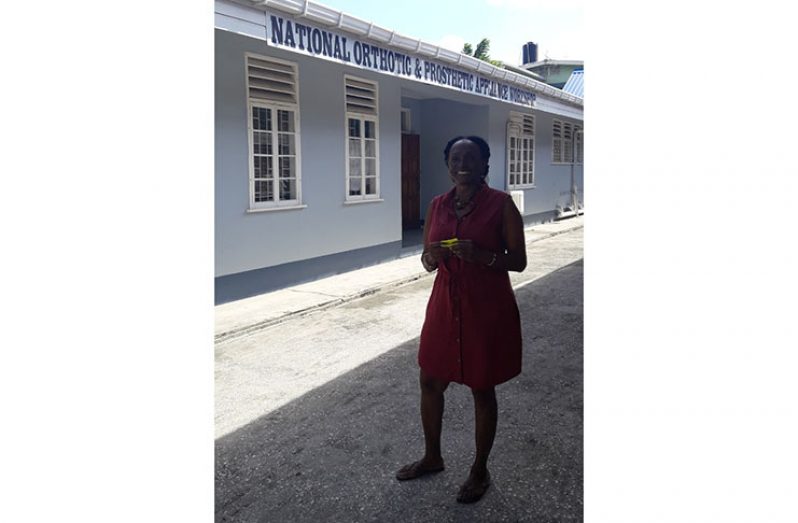By Vishani Ragobeer
AFTER continuously helping persons with disabilities for almost 50 years, the Ptolemy Reid rehabilitation center located in Carmichael Street, Georgetown, has plans for further development aimed towards helping more persons. According to the Rehabilitation Officer of the center, Cynthia Massay, “We have a very comprehensive programme.” This programme, she highlighted, is one which many are not fully educated about.
Massay said that in addition to being a rehabilitation center that caters for persons with physical and developmental disabilities, the center houses residents with these disabilities and also has a special needs school. The center also has Guyana’s only Orthotic and Prosthetic Appliance workshop.
The children with disabilities often go to the center from a tender age of about six to eight months, with a few entering at a younger age. Here, she noted, they are first introduced to the rehabilitation therapy and are familiarized with the services of the facility.
Massay also mentioned that the center was equipped with a day-care and dormitory area. “Normal day-cares would not have children with disabilities, so we have a day-care here where persons can bring their children,” she said and added later, “We also have a dormitory system too where parents can bring their children on Monday and collect them on Friday.”
Taking advantage of the services offered, Massay noted that some parents left their children at the center promising to return, but years later they still have not. She maintained that the Ptolemy Reid center will care for these children, despite their abandonment.
Focusing on the special needs school later, it was noted that there were three levels of teaching. As the children are taken care of and they show improvement, they progress from level one to two and finally to level three.

The school, when visited during the Christmas break, was notably equipped with special furniture to cater for these children- including ‘cut-out’ desks, which fosters better balance and in other cases allows those children with wheelchairs to sit at their desks.
Few students are also encouraged to be integrated into the normal school system, because they have displayed cognitive development despite their disabilities. However, according to Massay, this may present some problem since the Ministry of Education is not always “willing” to integrate students older than the stipulated age for that level of education.
In 2017, she noted two students- Becky who was diagnosed with epilepsy and Delicia who has cerebral palsy would begin attending “normal” schools as they have displayed the cognitive capacity and would be able to “manage” themselves at nursery school.
She also noted that one other student- Reyad, had displayed similar ability and the Ministry of Education had been notified. Massay expects, in 2017, that Reyad too will be attending a school not adapted for persons with disabilities.
The center also features vocational classes where students can learn to take care of themselves and learning skills such as farming.
Also in 2017, infrastructural development will be taking place at the center. Massay explained that to accommodate the number of boys and girls coming to the center, the dormitory area of the daycare would be extended. “We have a number of children on the waiting list for our daycare,” she said and added, “To accommodate these children, we need to enlarge some parts of the area.”
Currently, the boys’ and girls’ dormitories are located next to each other on the second floor of one of the buildings in the center. Massay revealed that the girls’ dormitory would be expanded to encompass the boys’ dormitory while the boys’ dormitory will then be repositioned on the third floor where the original special needs classrooms were positioned before the school was built. She disclosed that the boys’ dormitory will also be refurbished and the center had requested beds from the Food for the Poor (FFTP) organization.
There have also been plans to have a nurses’ room and a daycare for the children of those who worked at the center.
Massay, while briefing the Chronicle on the history of the institution, noted that the Centre was established by the Ministry of Health in January, 1967 to provide rehabilitative services to those who suffered from the poliomyelitis epidemics in 1960 and 1964. Thereafter, after the disease was controlled, the center was made into a rehabilitative center for children with disabilities.
This January, the center will be celebrating 50 years of establishment and 50 years of aiding children and persons with disabilities.




.png)









